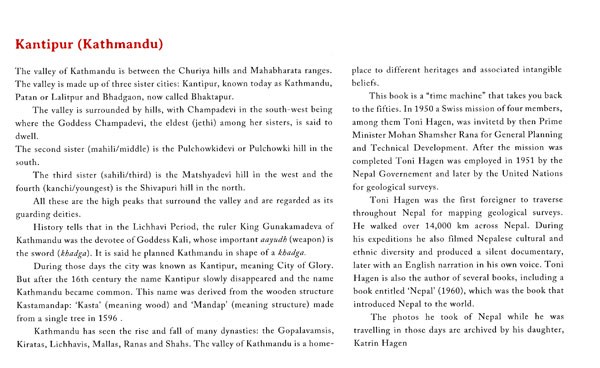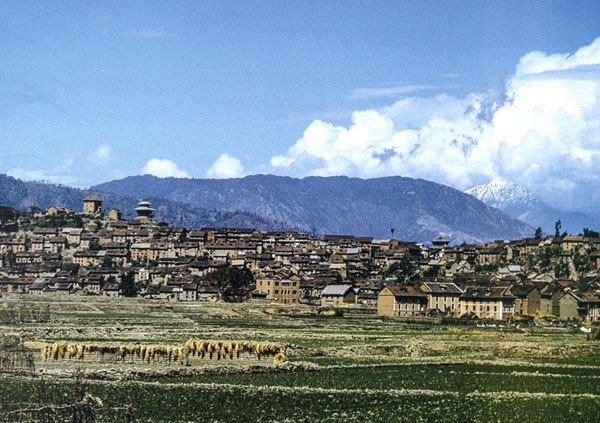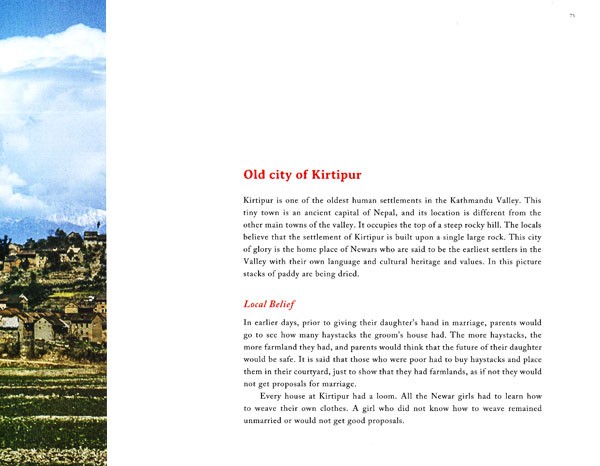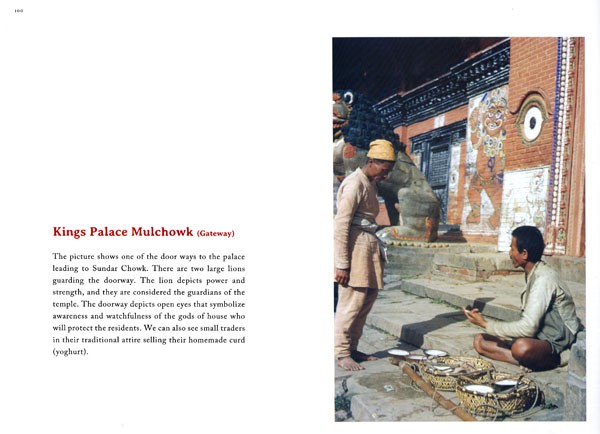
Toni Hagen Photos of Kathmandu Valley 1950-1960
Book Specification
| Item Code: | NBZ323 |
| Author: | Katrin Hagen |
| Publisher: | Nepal Heritage Society,Nepal |
| Language: | English |
| Edition: | 2019 |
| ISBN: | 9789937886413 |
| Pages: | 177 (Throughout Color Illustrations) |
| Cover: | PAPERBACK |
| Other Details | 8.10 X 11.60 inch |
| Weight | 850 gm |
Book Description
The exhibition of Toni Hagen's photos from the fifties organized by Nepal Heritage Society at Nepal Art Council in 2017 was very successful. Therefore the Nepal Heritage Society decided to publish a book with his pictures, the ones which have not been yet printed in his book 'Nepal'. We have concentrated on the Kathmandu Valley, as there were too many photos of all over Nepal.
In the early fifties the population of the Kathmandu Valley was about 300,000. Outside the cities there was only farming and no industries. Compared with Madan Chitrakar's pictures from the beginning of 1900 until the fifties there was little change, but after 1950, 'modernization' started. Only the temples have not changed much, except the ones which were destroyed during the earthquake in 2015. So we focused more on the areas which have changed and are not seen anymore. Before the road connection to India, in 1956 there were only a few cars in the Kathmandu Valley, all carried by at least 40 porters over the Chandraghiri Pass. There was no water supply, and in those days the water of the Bagmati River was still clean. There were also no sanitary facilities. This fortunately has changed. On the other side there was no plastic waste.
The pictures of the old days are somehow a cultural heritage. As Toni Hagen was the first foreigner who travelled for his geological survey all over the country, his photos and his films are of immense value not only for the archives but for the studies of the glaciers, as many of them have changed . due to the climate changes taking place through the century.
Most of these type of villages and houses which once existed cannot be seen anymore. The different ethnic groups all had their special house architecture, whereas most of the houses are built now in the same style.
We focused on colour pictures, with few black & white pictures. The colours of the slides are still amazing.
I would like to thank Mrs Ambica Shresta, president of Nepal Heritage Society and the initiator in printing this book, Dr. Poonam Rana who wrote the stories, Mrs Kalina Karki and Mrs. Evangeline Neve for correcting the text.
**Contents and Sample Pages**











